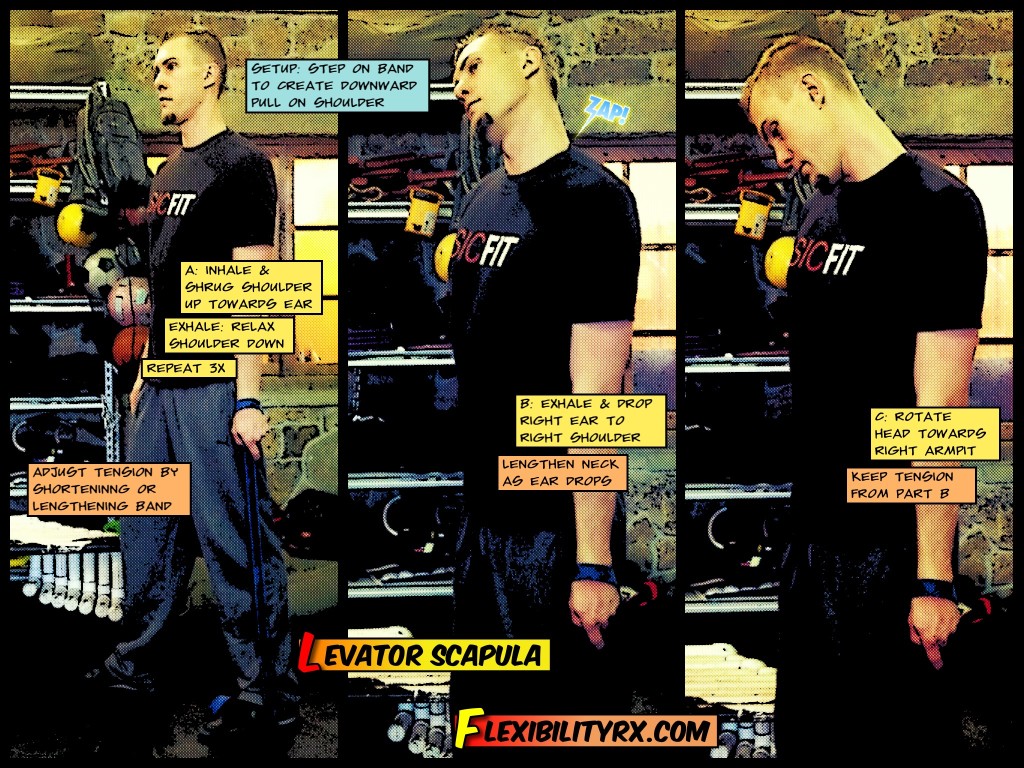
Levator Scapula Stretch
Levator scapula spans from the top of the shoulder blade to the side of the neck.
A tight levator scapula interferes with the fixed position of the shoulder blade during shoulder flexion – compromising shoulder position during overhead lifts.
That knot at the top of your shoulder blade is often a sign that levator scapula is acting as a brake to control forward head position (computer posture).
Tom Myers calls this muscle ‘capitus preventus (from going) forwardus’ – referring to this action, which is not the muscle’s normal healthy function.
Proper treatment includes improving thoracic flexibility and ribcage position to allow the head to be better supported.
However, freeing the fascia of the neck with this stretch is a good approach for a more relaxed shoulder and resolving the knot that is often treated with a therapists elbow or through treatment with a lacrosse ball.
The goal is not to lengthen the muscle, but free the surrounding fascia, which is accomplished through lateral flexion and rotation of the neck. A much more effective approach than jamming an elbow or ball into the top of the shoulder blade!
(Image courtesy of Tom Myers: from his groundbreaking book – “AnatomyTrains“)
Above image shows levator scapula on the left – spanning from side of neck down to supraspinatus of the rotator cuff and top of left shoulder blade.
Levator scapula is part of the ‘Core-Four’ Upper. It has a fascial connection to the supraspinatus muscle of the rotator cuff. Freeing this muscle along with the other muscles surrounding the shoulder blade allows for better shoulder flexion and stronger overhead lifts.
-Kevin Kula, “The Flexibility Coach” – Creator of FlexibilityRx™
Tags: arms overhead, flexibilityrx, levator scapula, levator scapula stretch, neck stretch, overhead flexibility


Leave A Reply (No comments so far)
You must be logged in to post a comment.
No comments yet